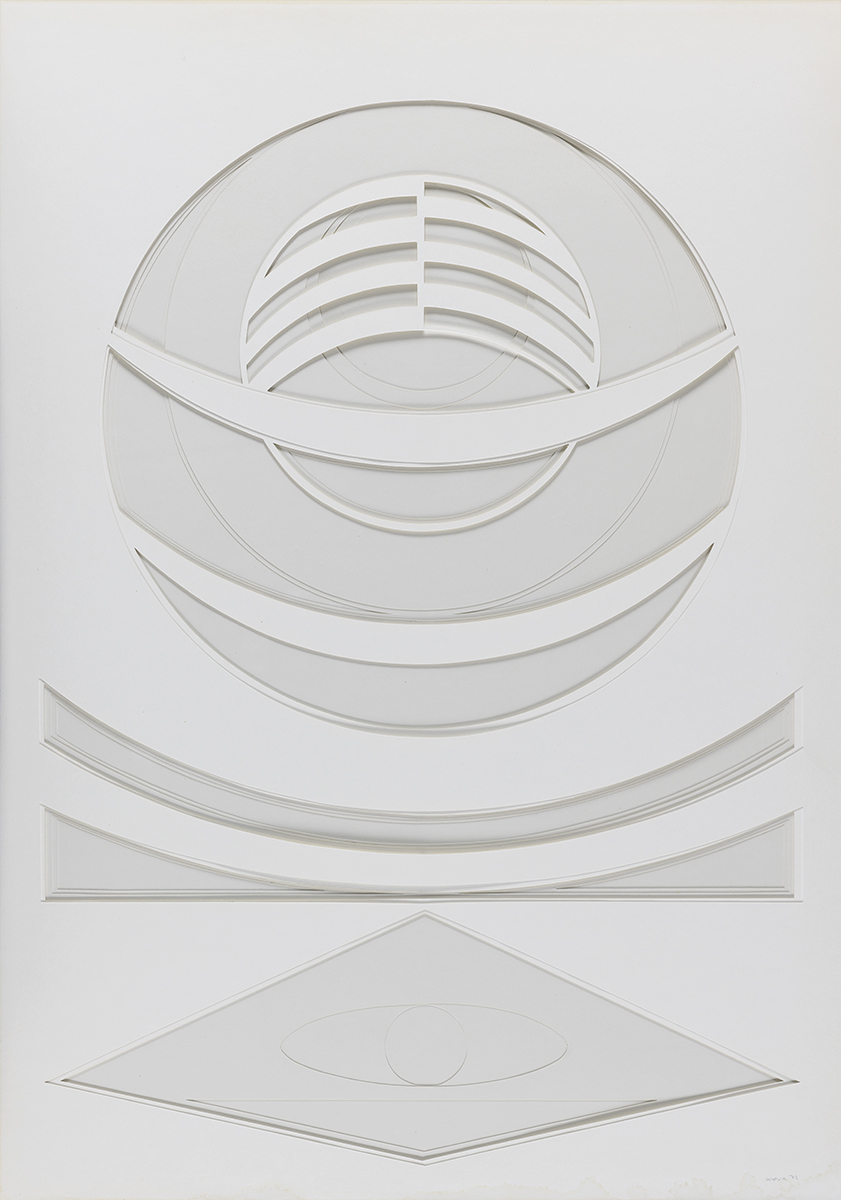Salvador Victoria
(Rubielos de Mora, Teruel, 1928- Alcalá de Henares, Madrid, 1994)
Superposición 6 X 5
1972
collage on poster board
105 x 70 cm
Inv. no. P00936
BBVA Collection Spain
At the end of 1964 Salvador Victoria returned to Spain after spending ten years in Paris. And so he brought to an end a highly fruitful period that had acquainted him intimately with international avant-garde movements. Worth underscoring is his knowledge of the work and thinking of two artists who would be critical for his later practice: Wassily Kandinsky (1866-1944)—particularly his study of geometric forms and his connection with the cosmic—and Paul Klee (1879-1940) and his treatment of light, motifs and spiritual conception of art. At that time, Victoria had already taken part in significant European events, including the 30th Venice Biennale (1960) and the 2nd Paris Biennale (1961) held at the Musée d´Art Moderne de la Ville de Paris.
After arriving in Madrid he joined the roster of the recently opened Galería Juana Mordó (where this work was purchased). In 1965 he held his first solo exhibitions in Spain, organised at the Ateneo in Madrid and the Museum of Fine Arts of Bilbao. From that moment onwards he would exhibit his work on a regular basis for many years. In fact, this work was purchased at the exhibition held in 1973 at Galería Lúzaro in Bilbao.
In this new phase in Madrid, the experience the artist had gained in Paris led to a rapprochement with the that began to take hold in Spain in the mid-1960s, as borne out by a significant number of exhibitions of Spanish and foreign artists. This movement would stay with him throughout his career, though always through a highly personal approach, using constructivist resources to obtain results characterised by heightened lyricism.
It was in the following decade—to which this piece belongs—when Victoria’s composition achieved greater geometric forcefulness, usually in the form of works dominated by clear axial symmetry and by the use of the circle.
Instrumental in this period was the use of to instil relief to both his works on paper and his paintings. In the so-called superposiciones (overlayerings) he exhibited at the Venice Biennale in 1972, he took the volumetric potential offered by that technique to the extreme. The result is a kind of complex skeleton stripped of all colour in order to focus on the rhythm created by the play between the various cuttings. He die-cut the poster boards with precision and meticulousness, placing sheets of perspex in the middle of them in order to instil a sense of depth and accentuate their sculptural qualities.









